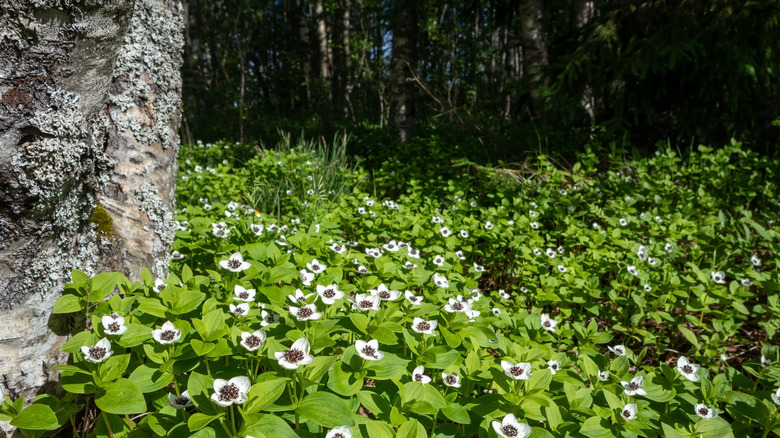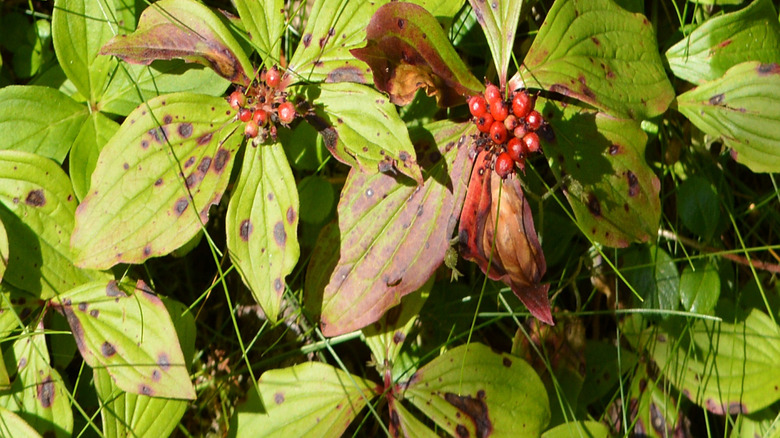Mistakes Everyone Makes When Trying To Grow Bunchberry Ground Cover
Bunchberry (Cornus canadensis) is a gorgeous, low-growing species of dogwood that thrives in the shade and tolerates almost any soil type. Native throughout Canada and the northern half of the United States, it's known for being a hardy, evergreen ground cover that puts on an impressive show all year round in USDA Zones 2 through 6. As hardy as the shade-loving ground cover is, there are a couple of planting mistakes that bunchberry likely won't survive — namely, planting this ground cover in full sun or dry soil. These mistakes can be enough to kill the plant in warmer climates. However, in colder climates, planting it in these conditions will still cause stress.
As long as it has plenty of shade and cool, moist soil, bunchberry is not too picky about other conditions. The plant prefers slightly acidic soil with a pH of around 6.0 but tolerates pH levels ranging from 3.0 to 7.9. Likewise, it prefers soil that's rich in organic matter, but it can be found growing in poor and sandy soils, too.
If you can keep it shaded and moist, it's one of the most beautiful, low-maintenance ground cover plants that love shade. Beginning in May, large flowers with creamy, white petals appear above the glossy, dark green foliage. By late summer, those will give way to equally pretty clusters of red berries. By fall, the leaves will turn a deep shade of red and remain on the stems through winter.
Don't plant bunchberry in dry, sunny areas
While it's a perfect alternative to invasive English ivy because of its cold hardiness and preference for shade, bunchberry doesn't handle heat or dry soil well. The biggest mistake you could make is planting it in full sun. Regardless of your climate, this ground cover prefers as much shade as possible. Bunchberries will not survive in areas where the soil temperatures reach 65 degrees Fahrenheit or higher in the summer. If your soil is likely to reach or exceed that limit in summer, make sure to plant bunchberries in full shade and mulch around the plants in early spring. Shade and mulch are two of the best ways to protect your plants during extreme heat.
Similarly, the second worst mistake you can make is planting bunchberry plants in dry soil. While it's been found growing in dry soils, that's usually further north in colder climates. In the southern part of its range, moisture is key to prevent the roots from becoming stressed. If you don't have a moist enough site, expect to water your bunchberry ground cover regularly to keep it thriving and healthy. Another more uncommon problem gardeners might make with bunchberries is trying to start the plants from seed. Seeds are slow to germinate and have a low survival rate. The ones that do survive will grow slowly, averaging about 1 inch of growth after 3 years. It's better to propagate this ground cover by cuttings or buy them pre-grown in 1-gallon pots from local or online retailers.
[Featured image by HSV via Wikimedia Commons | Cropped and scaled | CC BY-SA 4.0]

